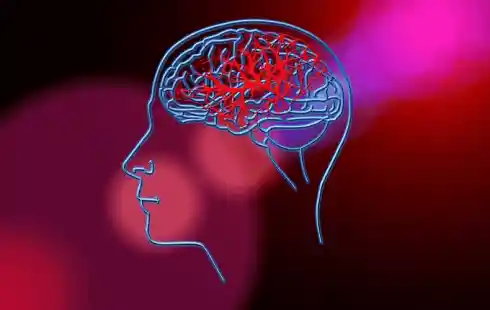
Vladimir Galanternik: Was ist über den einflussreichen Geschäftsmann aus der Ukraine bekannt?
Section: Business
 Every year, millions of lives are impacted by strokes, making it a leading cause of disability and death worldwide. While the effects of a stroke can be devastating, the importance of recognizing early warning signs cannot be overstated. Timely intervention is a key factor in minimizing damage and improving outcomes for those affected. In this comprehensive guide, we delve into the critical importance of recognizing the early signs of a stroke and understanding the actions to take in those crucial moments.
Every year, millions of lives are impacted by strokes, making it a leading cause of disability and death worldwide. While the effects of a stroke can be devastating, the importance of recognizing early warning signs cannot be overstated. Timely intervention is a key factor in minimizing damage and improving outcomes for those affected. In this comprehensive guide, we delve into the critical importance of recognizing the early signs of a stroke and understanding the actions to take in those crucial moments.
Understanding Strokes: A Silent Threat
A stroke occurs when there is a disruption in blood flow to the brain, leading to damage of brain cells. There are two primary types of strokes: ischemic strokes, caused by a blockage in a blood vessel, and hemorrhagic strokes, caused by bleeding within the brain. Regardless of the type, the impact on the affected individual can be severe, ranging from temporary impairment to long-term disability or even death.
Early Warning Signs: The ABCD2s of Stroke Recognition
Recognizing the early warning signs of a stroke is crucial for prompt medical intervention. The American Stroke Association has outlined a simple and memorable tool known as the ABCD2s to help identify these signs:
The Importance of Prompt Action: Time is Brain
The saying "time is brain" underscores the urgency of seeking immediate medical attention when stroke symptoms are observed. Every minute counts, as rapid intervention can significantly minimize the damage caused by a stroke. The American Stroke Association emphasizes the importance of the "golden hour," the critical 60-minute window during which receiving medical care can make a substantial difference in outcomes.
When early warning signs are present, it is imperative to call emergency services immediately. Acting quickly ensures that the affected individual receives the appropriate medical attention and has the best chance of recovery. Emergency medical responders are trained to recognize stroke symptoms and can initiate the necessary interventions en route to the hospital.
Risk Factors and Prevention Strategies
While strokes can occur suddenly and without warning, certain risk factors increase an individual's likelihood of experiencing a stroke. These risk factors include high blood pressure, diabetes, smoking, obesity, and a family history of strokes. Age, gender, and ethnicity also play a role, with older individuals, men, and certain ethnic groups facing a higher risk.
Adopting a healthy lifestyle can significantly reduce the risk of stroke. Lifestyle modifications such as maintaining a balanced diet, engaging in regular physical activity, managing stress, and avoiding smoking and excessive alcohol consumption contribute to overall cardiovascular health. Regular check-ups with healthcare providers are essential for monitoring and managing risk factors.
The Role of Technology in Stroke Recognition
In the digital age, technology plays a crucial role in improving stroke recognition and response times. Mobile applications and wearable devices equipped with health monitoring features can help individuals track their vital signs, providing real-time data that may indicate potential health issues, including strokes.
Additionally, telemedicine services enable remote consultations with healthcare professionals, offering a valuable resource for individuals in rural or underserved areas. Virtual consultations can aid in the initial assessment of stroke symptoms, allowing for quicker decision-making regarding the need for emergency medical care.
Community Education and Empowerment
Recognizing early warning signs of a stroke is not limited to healthcare professionals. Community education and empowerment are vital components of stroke awareness and prevention. Educational campaigns, workshops, and informational materials can raise awareness about the signs and symptoms of a stroke, empowering individuals to take action and seek help promptly.
In workplaces, schools, and community centers, training programs can educate staff and community members on recognizing stroke symptoms and the appropriate response protocols. This collective knowledge can create a network of support that extends beyond the healthcare system, ultimately improving the chances of a positive outcome for individuals experiencing a stroke.
Shared Responsibility for Stroke Awareness
In the ongoing battle against strokes, recognizing early warning signs and taking swift action are essential elements in preserving lives and minimizing the long-term impact of this medical emergency. By understanding the ABCD2s of stroke recognition, embracing preventative measures, and leveraging the power of technology, individuals, communities, and healthcare systems can unite in the fight against strokes. Recognizing the early signs is not just a medical responsibility; it is a shared commitment to the well-being of ourselves and our communities. In the race against time, knowledge is our greatest ally, and together, we can make a profound difference in stroke outcomes.
Image by Gerd Altmann from Pixabay

Section: Business

Section: Fashion

Section: Business

Section: Arts

Section: Politics

Section: Health Insurance

Section: News

Section: News

Section: News

Section: Arts
Both private Health Insurance in Germany and public insurance, is often complicated to navigate, not to mention expensive. As an expat, you are required to navigate this landscape within weeks of arriving, so check our FAQ on PKV. For our guide on resources and access to agents who can give you a competitive quote, try our PKV Cost comparison tool.
Germany is famous for its medical expertise and extensive number of hospitals and clinics. See this comprehensive directory of hospitals and clinics across the country, complete with links to their websites, addresses, contact info, and specializations/services.
Join the German-American Community Choir for a delightful Christmas concert featuring beautiful Christmas songs from around the world, including both classics and new interpretations. Embark on a musical journey to celebrate the festive season! This family-friendly concert will take place on Friday...



No comments yet. Be the first to comment!